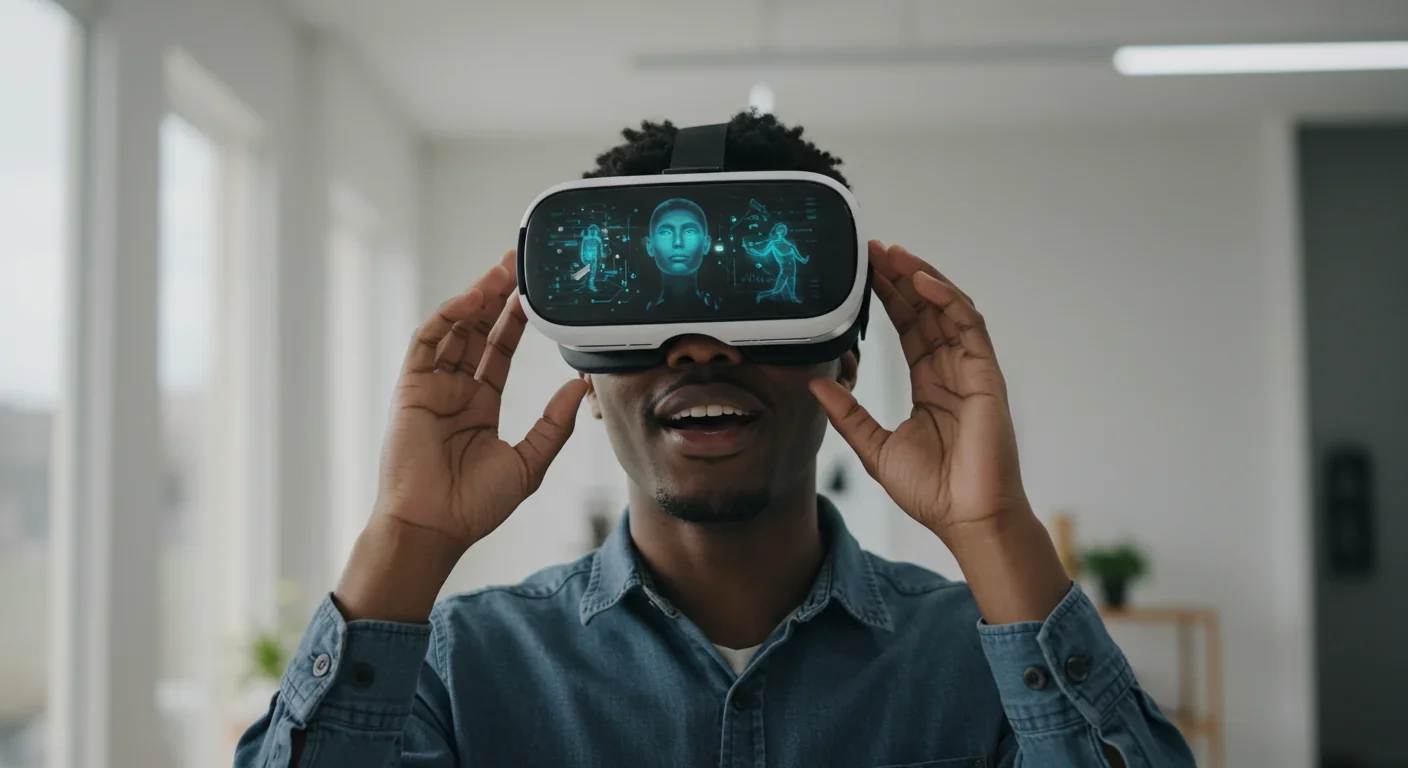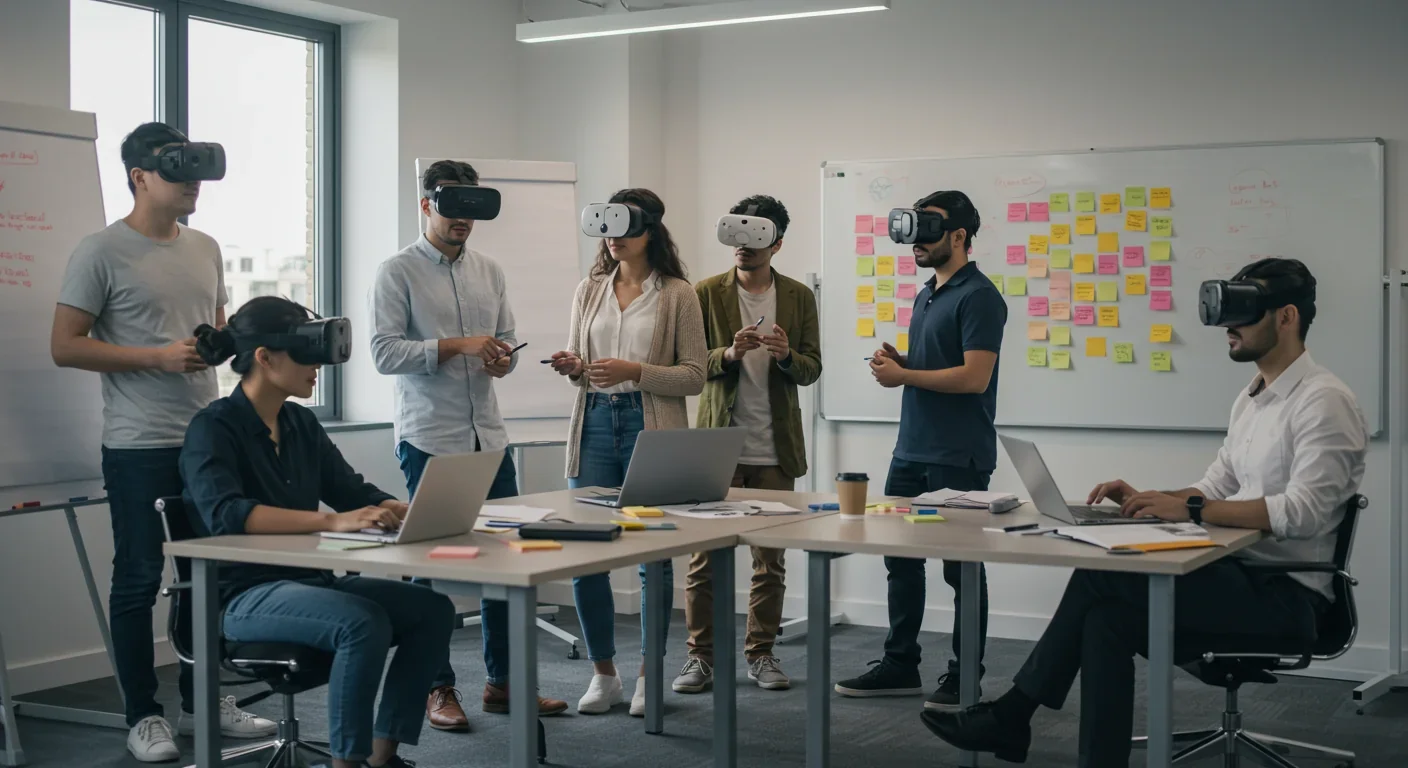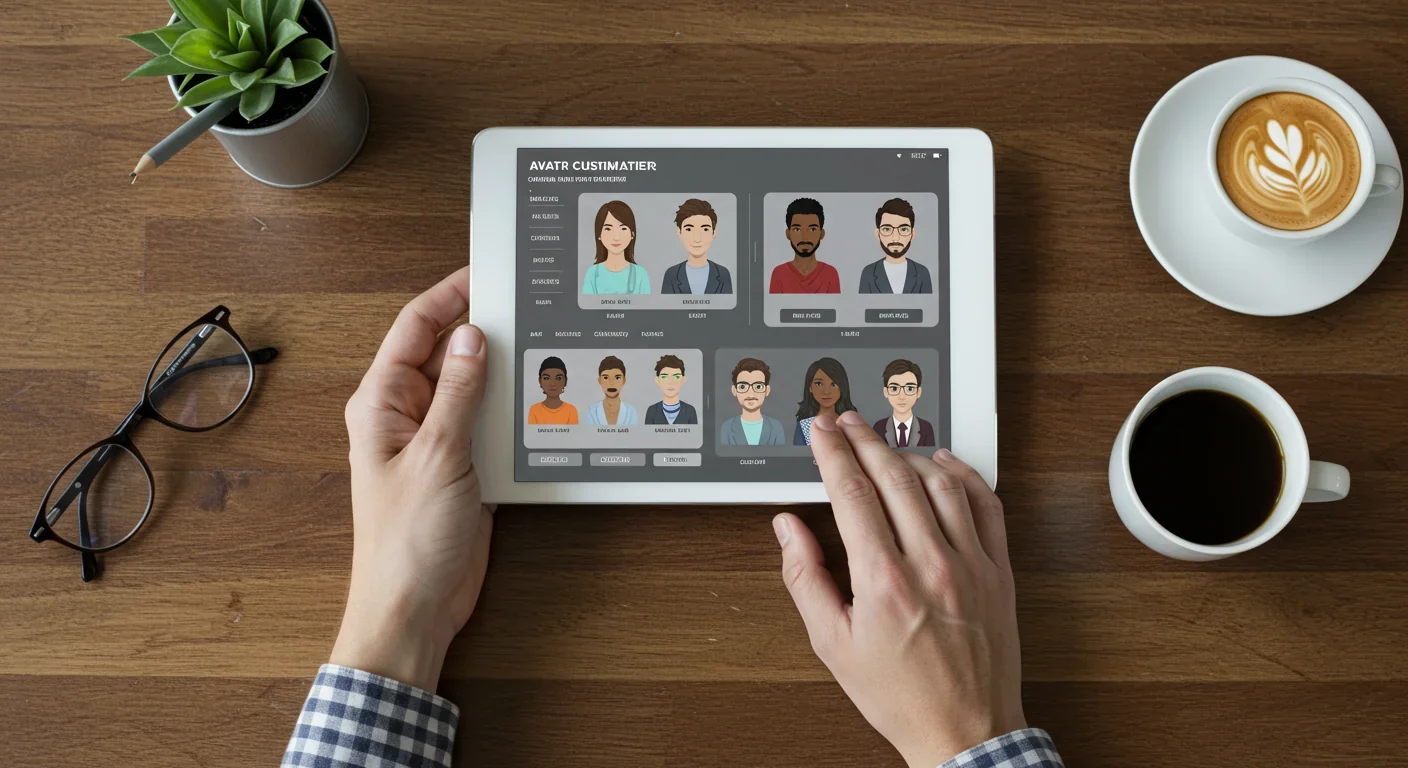Why Your Brain Is Hardwired to Lose Money

TL;DR: Your digital avatar shapes your real behavior through the Proteus Effect—a phenomenon where embodying virtual traits changes how you act, with applications transforming therapy, training, and gaming.

Imagine stepping into a virtual world, selecting a tall, muscular avatar—and suddenly feeling brave enough to take risks you'd never attempt in real life. Or choosing a friendly, playful character for a work meeting and watching your creativity skyrocket. This isn't science fiction. It's the Proteus Effect, a psychological phenomenon that's quietly reshaping everything from gaming to corporate training to mental health treatment.
What makes a digital representation of yourself powerful enough to alter your actual behavior? And why should anyone care about something that happens in a virtual space?
Because the boundaries between virtual and real are dissolving fast. By 2030, the global VR market will hit $87 billion, and we'll spend more time in virtual environments than ever before. The question isn't whether avatars will influence us—it's how we're going to design them to make us better.
Back in 2007, Stanford researchers Nick Yee and Jeremy Bailenson noticed something strange. People assigned to tall avatars in virtual reality negotiated more aggressively than those with short avatars. Attractive avatars made people more social. It was as if the digital costume changed the person inside.
They called it the Proteus Effect, after the Greek god who could change his shape at will. The core idea is simple but profound: when you embody an avatar with specific traits, you unconsciously adopt behaviors associated with those traits. You don't just look different—you act different.
A meta-analysis of 46 studies confirmed the effect is real and consistent, with an effect size between 0.22 and 0.26. That might sound small, but in behavioral science, it's approaching medium impact. For context, that's roughly the same magnitude as many educational interventions we consider effective.
The mechanism is rooted in stereotypes and expectations. We all carry mental shortcuts about what tall people, muscular people, or friendly-looking people do. When you inhabit an avatar with those characteristics, your brain activates the corresponding behavioral script. You're priming yourself to act in ways that match your digital appearance.
The Proteus Effect didn't emerge from nowhere. It builds on decades of research into embodied cognition—the idea that our physical form shapes our thoughts and actions. Classic studies showed that simply holding a warm cup of coffee makes people judge others as warmer. Sitting in an upright posture increases confidence. Our bodies are constantly feeding our minds subtle behavioral cues.
Virtual reality took this concept and turned it up to eleven. Because now you can change your body entirely, instantly, and repeatedly. You're no longer limited by genetics or physics. Want to see the world from a different height, age, or gender? Put on a headset and choose.
The implications became clear when neuroscientists started scanning brains during avatar interactions. In a 2025 study, researchers found that avatar feedback modulates the amygdala's response to uncertainty, driving people to take more risks. When participants received facial expressions from an avatar during a gambling task, they gambled 35% more than when watching a real human. The avatar created a sense of psychological safety that dampened threat responses in the brain's emotional center.
Even more striking: people with higher empathetic concern showed stronger effects. The amygdala response correlated with empathy scores, suggesting the effect is stronger for those who naturally connect emotionally with others—even digital others.
This isn't just perception or self-report. It's measurable brain activity linked directly to observable behavior change.

So what specific characteristics matter? Turns out, almost everything.
Height and size top the list. Tall avatars make users more confident and assertive in negotiations. In one Stanford experiment, participants with taller avatars accepted unfair offers less often and demanded more money. The effect persisted even after they left VR, suggesting behavioral conditioning that outlasts the virtual session.
Conversely, larger or more muscular avatars do something unexpected: they reduce pain sensitivity. A 2024 study found that participants using muscular avatars paired with tactile feedback reported pain levels comparable to moderate doses of opioids. The avatar activated mental associations with strength and pain resistance, which dampened actual physical discomfort.
Gender and appearance also drive dramatic shifts. People assigned to attractive avatars self-disclose more and move closer to strangers. They behave as if they expect positive social responses, which creates a self-fulfilling cycle. Similarly, gender-swapped avatars can shift communication styles and risk preferences in ways that mirror real-world gender stereotypes—whether we like it or not.
Realism versus whimsy creates a trade-off. High human-likeness avatars can trigger the uncanny valley, making users feel uncomfortable or even eliciting negative emotions. But moderate resemblance—think cute animals or stylized cartoon humans—tends to enhance positive emotional perception. A recent study on avatar emotion found that raccoon and shark avatars, with moderate human similarity, generated more consistent and positive emotional responses than hyperrealistic human avatars.
And here's where it gets practical: context matters enormously. In VR meetings focused on creativity, playful and non-realistic avatars increased brainstorming performance by 28% compared to realistic business avatars. Participants preferred humanoid avatars for formal business, but switched to imaginative characters when they needed to think outside the box.
The takeaway? There's no one-size-fits-all avatar. The optimal design depends on the task, the user's personality, and the emotional tone you want to create.
The Proteus Effect has jumped from academic labs into billion-dollar applications.
Gaming and social platforms have known about this for years. Games like League of Legends use it to shape community behavior—researchers analyzing 13.6 million chat messages found that avatar names and appearances influenced players' communication style, including toxicity levels. Designers now actively use avatar aesthetics to nudge players toward cooperation and civility.
Corporate training is leveraging avatar-driven behavior change at scale. Companies are building VR simulations where employees practice difficult conversations, public speaking, or leadership scenarios. The avatar provides a safe psychological distance—you can fail, experiment, and reset without real-world consequences. Early pilots report significant improvements in confidence and skill retention compared to traditional role-playing exercises.
One aerospace firm ran a VR negotiation training program and found that participants who used assertive avatars during practice transferred those behaviors to real-world supplier negotiations, securing better contract terms. The effect wasn't just about practice; the avatar primed them to embody confidence beyond the headset.
Mental health interventions are perhaps the most transformative application. Avatar therapy for schizophrenia helps patients confront and gain control over auditory hallucinations by creating digital representations of the "voices" they hear. Patients engage in structured dialogues with these avatars, gradually reducing distress and frequency of hallucinations. Clinical trials show significant reductions in symptom severity compared to standard treatments.
For PTSD, virtual reality exposure therapy uses avatars to safely recreate traumatic scenarios. Patients can confront their trauma in a controlled, gradual way, with therapists adjusting the intensity in real-time. The avatar serves as both a buffer and a bridge—close enough to trigger therapeutic processing, distant enough to feel safe.
And then there's pain management. Remember those muscular avatars reducing pain sensitivity? Hospitals are now testing VR pain management protocols for chronic pain patients and burn victims. By embodying strong, resilient avatars during painful procedures, patients report lower pain scores and reduced anxiety. It's not a placebo—it's leveraging the brain's own capacity to reframe sensory input.

If avatars shape behavior, then designing them becomes a form of psychological engineering. And like all engineering, it requires principles and ethics.
Embodiment is the foundation. The stronger the sense that the avatar "belongs" to you, the stronger the Proteus Effect. Research consistently shows that self-similarity—avatars that look like you or reflect aspects of your identity—amplifies behavioral changes. Personalization isn't just cosmetic; it's functional.
VR systems are getting better at this. Modern platforms scan your face, match your movements in real-time, and let you customize every detail. The result is a deeper sense of ownership, which translates to stronger behavioral conditioning.
But self-similarity isn't always the goal. Sometimes you want cognitive distance. If someone is trying to overcome social anxiety, embodying a completely different avatar—say, a confident, charismatic character—can provide a safe experimental space. The key is matching the level of similarity to the therapeutic or training objective.
Empathy interventions rely on avatar-driven perspective-taking. Programs that let people experience life in a different body—different age, race, ability, or gender—have shown measurable increases in empathy and prosocial behavior. Stanford's Virtual Human Interaction Lab demonstrated that embodying an elderly avatar increased participants' empathy toward older adults and changed their long-term attitudes.
Similarly, VR empathy training programs are being used in healthcare to train doctors and nurses. By experiencing patient perspectives—such as living with dementia or mobility impairments—practitioners develop deeper understanding and adjust their communication and care approaches.
Avoiding unintended consequences is critical. If avatars can nudge behavior in positive directions, they can also reinforce harmful stereotypes or manipulate users in unethical ways. One study on stereotype threat found that custom avatars could either mitigate or amplify performance anxiety depending on how they were designed.
Platforms need transparency. Users should understand when and how avatar characteristics might influence their behavior. Just as food labels tell you what's inside, avatar systems should disclose the psychological "ingredients" baked into design choices.
We're entering an era where avatars won't just be static characters—they'll be intelligent, adaptive, and persistent across platforms.
AI-driven avatars will learn your behavior patterns and adjust in real-time. Imagine an avatar that becomes more confident as you practice public speaking, or one that adapts its appearance based on your emotional state to help regulate anxiety. These systems could act as personalized behavioral coaches, nudging you toward growth without conscious effort.
But that raises new questions. Who controls the AI? What happens if your avatar's "suggestions" conflict with your values or autonomy? The potential for manipulation is real, and regulation is lagging far behind technology.
Mixed reality will blur the line between avatars and physical presence. Apple's Vision Pro, Meta's Quest, and emerging AR glasses will let avatars coexist with the real world. You'll see your colleague's avatar sitting across from you at a coffee shop, or a virtual mentor guiding you through a physical task.
This persistent, context-aware embodiment could amplify the Proteus Effect in ways we haven't seen yet. If your avatar follows you everywhere, constantly shaping how you present yourself and how others perceive you, the feedback loops become continuous and compounding.
Cross-platform identity is another frontier. Right now, avatars are siloed—your Fortnite character doesn't carry over to your VR work meetings. But efforts are underway to create portable digital identities that persist across platforms. Imagine a single avatar that represents you in games, social media, virtual workspaces, and telehealth appointments.
The upside is consistency and deeper embodiment. The downside is centralization of identity data and increased surveillance. If one avatar tracks your behavior across every digital context, who owns that data? Who can access it? And can it be used to predict or influence your decisions?
The Proteus Effect is powerful, which means it's also dangerous in the wrong hands.
Behavioral manipulation is the most obvious concern. If companies know that certain avatar designs make you spend more, take more risks, or disclose more personal information, they have a financial incentive to exploit that knowledge. Gaming and social platforms already use psychological tactics to maximize engagement; avatars add a new vector for nudging behavior.
There's also the risk of identity fragmentation. If you embody radically different avatars across contexts—confident at work, playful with friends, anonymous online—do those fragments integrate into a coherent self? Or do they create cognitive dissonance and confusion about who you "really" are?
Psychologists are starting to explore this question, and the early data is mixed. Some users report that multiple avatars help them explore different facets of identity safely. Others feel unmoored, as if they're performing roles rather than expressing themselves.
Equity and access matter too. High-quality VR systems are expensive. If the Proteus Effect delivers real benefits for confidence, empathy, and skill-building, then unequal access to these tools will deepen existing inequalities. Wealthier individuals and organizations will get avatar-enhanced training and therapy, while others are left behind.
Finally, there's the question of persistence. Most research shows that Proteus Effect behavior changes are temporary, fading once you remove the headset. But some studies suggest that repeated, long-term avatar use can create lasting behavioral shifts, especially if the virtual experience is emotionally intense or deeply embodied.
If that's true, then we need to think carefully about which behaviors we want to reinforce and which we want to remain temporary. Do we want people to carry the assertiveness of a tall avatar into every negotiation? Or should there be boundaries between virtual empowerment and real-world identity?
The Proteus Effect proves that we are not fixed, static beings. Our behavior is astonishingly flexible, shaped by context, embodiment, and expectation. Virtual avatars give us unprecedented control over those variables, opening doors to self-improvement, empathy, and healing that were previously unimaginable.
But with that power comes responsibility. Designers must prioritize transparency, user autonomy, and equity. Policymakers need to establish guardrails against manipulation and discrimination. And users—all of us—need to become literate in how avatars influence us, so we can make informed choices about the digital selves we inhabit.
The next time you create an avatar, ask yourself: Who do I want to become? Not just in the game, but in the habits and behaviors I'm practicing. Because the pixels you choose today might shape the person you are tomorrow.
Your avatar isn't just a costume. It's a tool for transformation. Use it wisely.

MOND proposes gravity changes at low accelerations, explaining galaxy rotation without dark matter. While it predicts thousands of galaxies correctly, it struggles with clusters and cosmology, keeping the dark matter debate alive.

Ultrafine pollution particles smaller than 100 nanometers can bypass the blood-brain barrier through the olfactory nerve and bloodstream, depositing in brain tissue where they trigger neuroinflammation linked to dementia and neurological disorders, yet remain completely unregulated by current air quality standards.

CAES stores excess renewable energy by compressing air in underground caverns, then releases it through turbines during peak demand. New advanced adiabatic systems achieve 70%+ efficiency, making this decades-old technology suddenly competitive for long-duration grid storage.

Our brains are hardwired to see patterns in randomness, causing the gambler's fallacy—the mistaken belief that past random events influence future probabilities. This cognitive bias costs people millions in casinos, investments, and daily decisions.

Forests operate as synchronized living systems with molecular clocks that coordinate metabolism from individual cells to entire ecosystems, creating rhythmic patterns that affect global carbon cycles and climate feedback loops.

Generation Z is the first cohort to come of age amid a polycrisis - interconnected global failures spanning climate, economy, democracy, and health. This cascading reality is fundamentally reshaping how young people think, plan their lives, and organize for change.

Zero-trust security eliminates implicit network trust by requiring continuous verification of every access request. Organizations are rapidly adopting this architecture to address cloud computing, remote work, and sophisticated threats that rendered perimeter defenses obsolete.